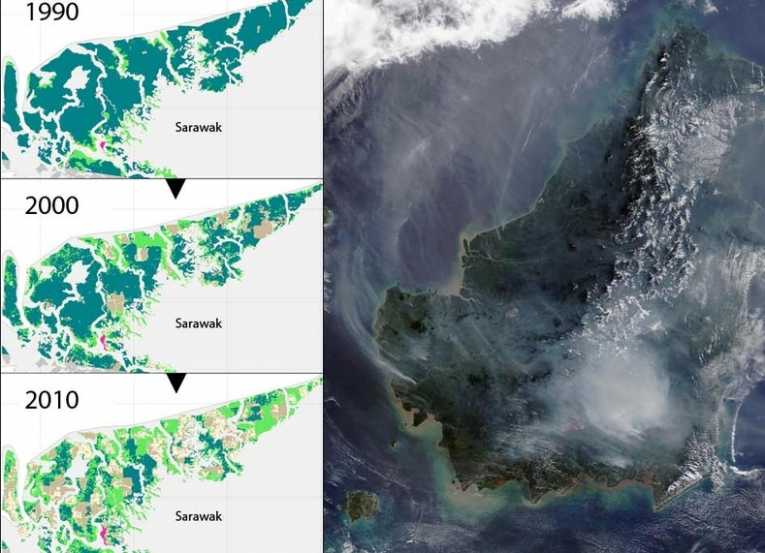Like Southeast Asia's tropical rainforests, the region's peatlands are disappearing at alarming rates. In fact, they could vanish altogether by 2030, says a new study published in Frontiers in Ecology and the Environment.
Found mainly in peninsular Malaysia, Borneo, and Sumatra, peatlands consist of partially decayed organic material saturated by water. They form an important carbon sink, keeping large quantities of carbon out of the atmosphere while providing habitat for certain species of wildlife. However, tropical peatlands are disappearing due to increased draining, fires, and other ecosystem changes, releasing vast amounts of carbon into the atmosphere
In Indonesia and Malaysia, the palm oil industry has played a large role in the destruction of peatlands. Palm oil has become an important export used in numerous products from foods to cleaning supplies. The two nations are the world's largest exporters of palm oil, with Indonesia producing 87 percent of the world's supply, according to a March 2011 Nature article.
Between 1990 and 2010, the percentage of original peatland coverage dropped by 41 percent, says Dave Mosher in Science magazine. About 2,700 square kilometers of Southeast Asian peatlands disappear each year, he adds.
Peatlands form in wet lowland areas where lack of oxygen keeps vegetable matter from completely breaking down. The organic material piles up in partially decayed layers. Because peatlands are saturated by water, they are often called peat swamps. In the tropics, they form at about .5 mm to .20 mm per year, says the ASEAN Peatlands Forest Project (APFP). Existing peatlands have taken thousands of years to form. Preserving the remaining peatlands would require dramatic measures to protect them.
With 21 million hectares of peatlands, Indonesia holds the most by a wide margin. In May 2010, Indonesia pledged to implement a two-year moratorium on clearing natural forests and peatlands at the beginning of 2011, as part of a $1 billion agreement with Norway. However, the Indonesian president has yet to sign the decree, presumably because of confusion over what type of forest should be protected. Much of the country's forests and peatlands have been affected by humans, leading to ambiguity over what is ''natural.''
Six thousand species of animals live only in Southeast Asia's peatlands, says Mosher. Orangutans, critically endangered in Sumatra and endangered in Borneo, live in peatlands as well as fast-disappearing lowland forests. Further, the world's peatlands store more carbon than the rest of the world's plants combined, according to APFP.
Image Credit: (left) Adapted from J. Mietinnen et al., Frontiers in Ecology and the Environment (2011); (right) NASA










